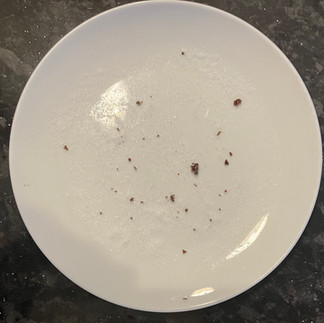
To prove this point, McVitie’s went head to head with HMRC in a fierce court battle
The first biscuits introduced into Britain were a kind of basic mouth scrub.
Did Jim Figgerty really put the fig in fig rolls?
Before we start making our delicious crunchy chocolate biscuits let’s take a look at what constitutes a biscuit and why a slice of burnt toast might be all you need to survive during a cost of living crisis.
The word biscuit comes from the French term Bis-qui which has its origins in Latin (Panis biscuits) which means bread baked twice. If you over toast a slice of bread you end up with what the Romans called a biscuit or what we might call a rusk, powerful for teething babies or for storing in a cupboard as an emergency food supply as you await Armageddon or the next cost of living crisis. Aside from tooth breakers like ships biscuits (a derivative of the Roman rusks) which were so tough and durable some sailors used them as postcards to write massages on, the first biscuits introduced to Britain came as long crisp fingers, that were flavoured with aniseed, to be eaten after a meal to sweeten the breath and suppress the gasses belching up from the stomach. The recipe for these delights could be found alongside plague remedies and the cure for the stench of toes. Since their introduction as a breath neutraliser the UK has become the country with the highest consumption of biscuits in the world at 13.6kilograms per person per year. That’s an overall total of 578 million kilo a year.
In the late 1960’s when I was in my final year at primary school I was sat beside a boy who was fascinated with Jacob’s fig rolls. Every day he would bring one single fig roll to school in his lunch box as a sweet treat. When the bell would ring for break time he would open his lunch box take out the fig roll, set it to one side, then proceed to eat his sandwich which had a variety of fillings depending on which day of the week it was. Monday and Thursday were Dairylea cheese days, Tuesday and Thursday were ham or ham and tomato, Friday’s were filled with whatever was left over from the 4 previous days. The one thing that remained a constant was the single fig roll. When he had finished eating his sandwich and its foil wrapping had been folded in to a neat triangle shape and placed back in his lunch box only then would he turn his attention to the fig roll. He would slowly take the fig roll between his thumb and index finger, hold it in front of his eyes and marvel at its construction inquiring over and over again “How do they do it, how do they get the figs In there?” before devouring the roll in one gluttonous mouthful.
It was around this time that the Irish biscuit manufacturer Jacob’s ran a very successful TV advertising campaign with the strapline “How do Jacob’s get the figs into the fig rolls?” With the elusive Jim Feggerty hailed as the man entrusted with the secret baking process. Prior to these TV adverts ( which are now cult viewing on YouTube) the original newspaper advertising campaign began its life as a search for the man who held the key to this mysterious baking phenomenon with headlines like “Jim Feggerty please come home” “Have you seen Jim Feggerty?” “Jim Feggerty please contact your office” the inference being that no one else in Ireland but Jim Feggerty could put the figs into the fig rolls. Jacob’s need not have been so concerned as it has been well documented in the annals of history that the ancient Romans thought to sweeten things up a bit by placing a ripe fig between two slices of their bland rusk type biscuit and create what must surely have been the world’s first fig roll. This would effectively eliminate Jim Figgerty from the inquiry and render him redundant.
In the early 1990’s McVitie’s went head to head with HMRC to avoid been required to add a whopping 2O% vat to retail price of their Jaffa Cake. Cakes are regarded as an essential food item and are not subject to VAT. Biscuits on the other hand are rated a luxury item and are subject to VAT at 20%. The characteristic that most distinguishes a cake from a biscuit is loss of moisture as they age, biscuits on the other hand absorb moisture as they age. A cake turns hard. A Biscuit turns soft and soggy. You can conduct a simple experiment at home to prove this claim by leaving a digestive biscuit and a Jaffa cake on a plate for a couple of days and marvel at the result . After a long protracted court case Mcvitie’s finally won the day when they baked a giant sized Jaffa cake and produced it in court to prove once and for all that the Jaffa truly is a cake, thus avoiding adding VAT onto the cost of their top selling biscuits…… I mean cake.
Yummy Chocolate Biscuits
What you will need
A Bowl
A wooden spoon or electric mixer
A metal baking tray (If you don’t have one make one from tin foil)
A fork
Cold water
Ingredients
4oz Self raising flour
4oz soft butter
2oz Caster sugar
Spoonful of coca powder (Only needed if you want choc flavoured biscuits)
Few drops of vanilla essence (Not essential)
Method
Mix the butter and sugar together until you make a fluffy looking mash
Add the flour, coca power, vanilla essence and mix until all are combined into a thick paste.
Make 24 marble sized ball and set on the tray
Dip the fork in cold water and flatten the balls with the fork.
Cook in the oven at 170c gas mark 4 for 10 minutes
Turn out onto a wire rack and wait to cool
Tips
Put the kettle on and make a cup of tea. By the time you have made your cuppa the biscuits will be ready to eat.














Comments